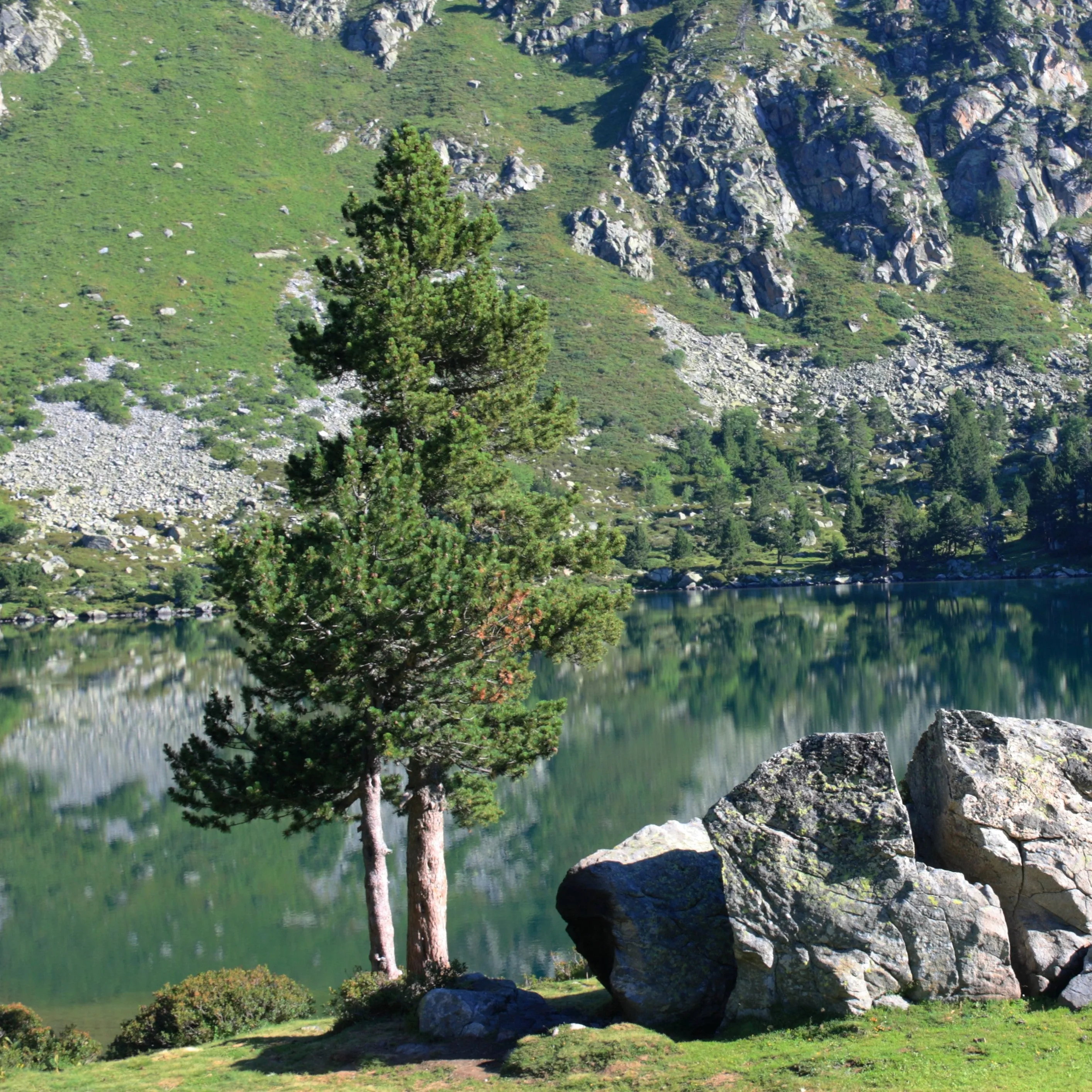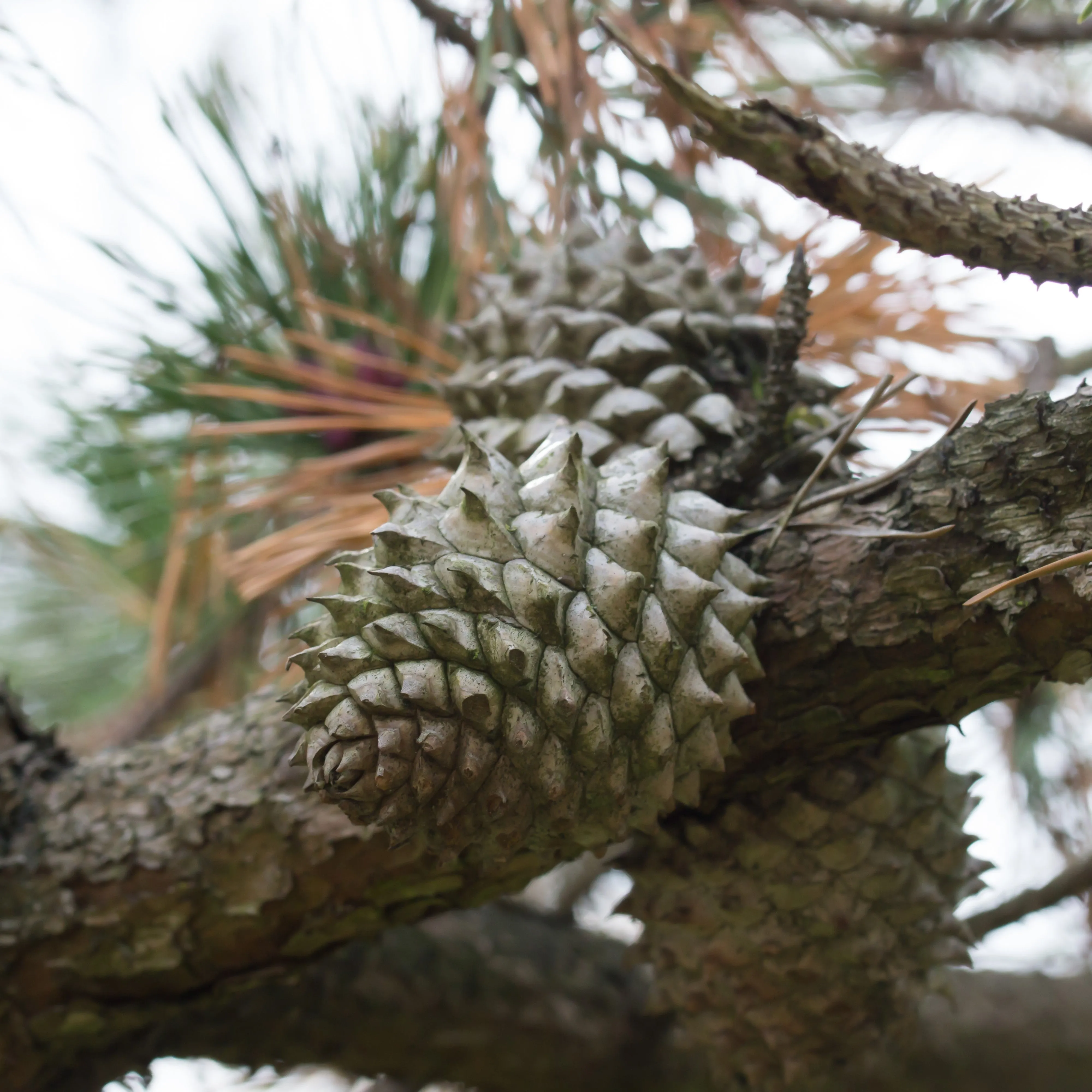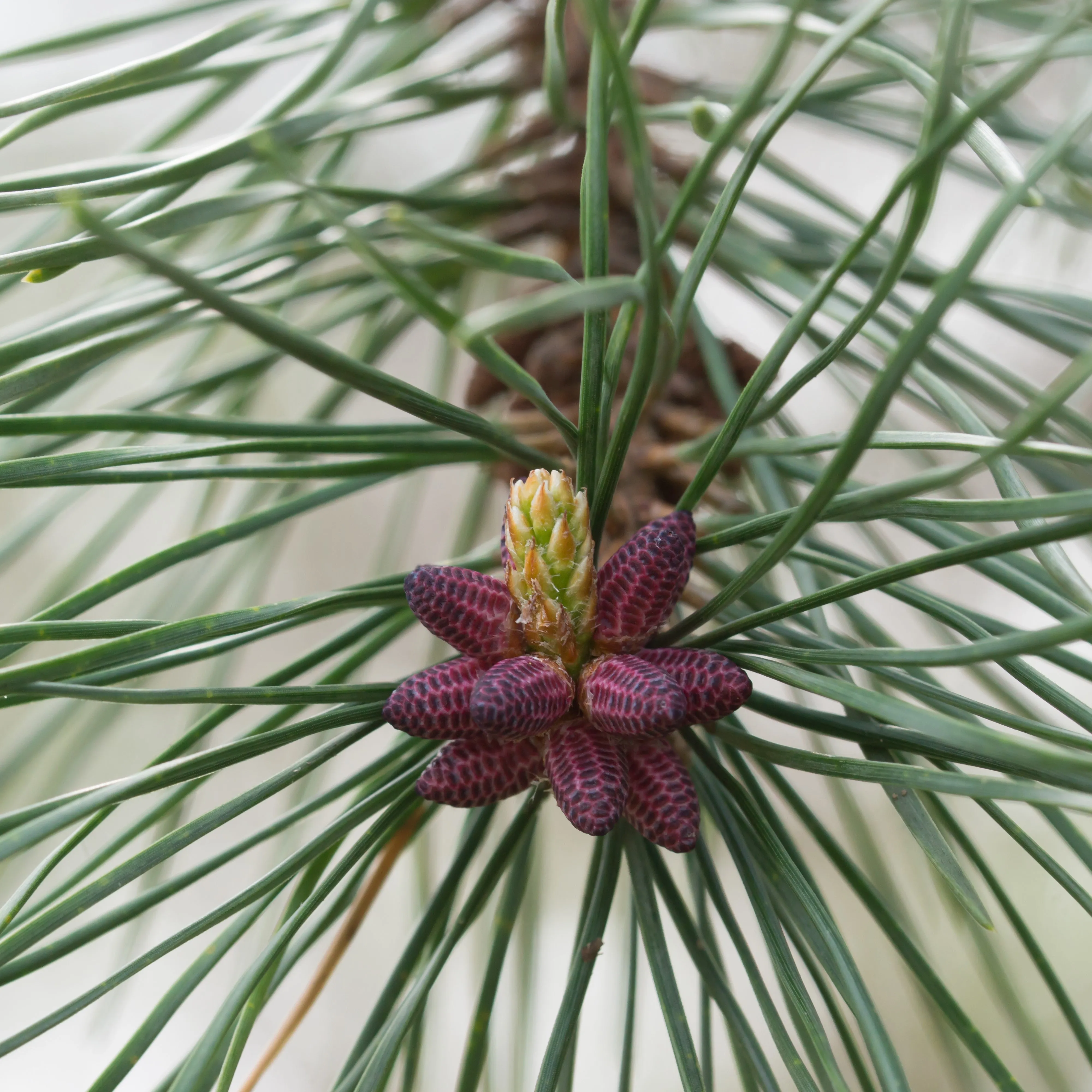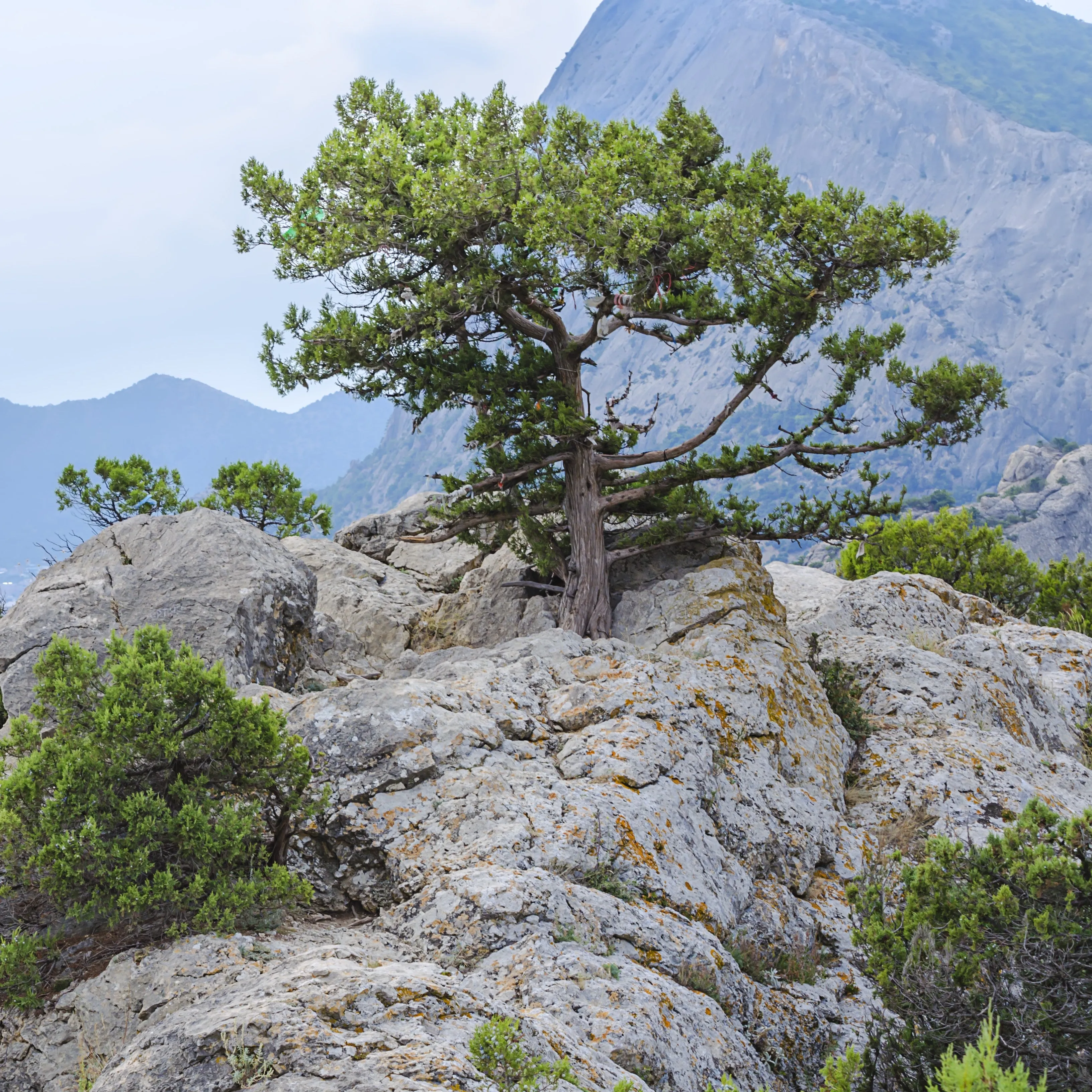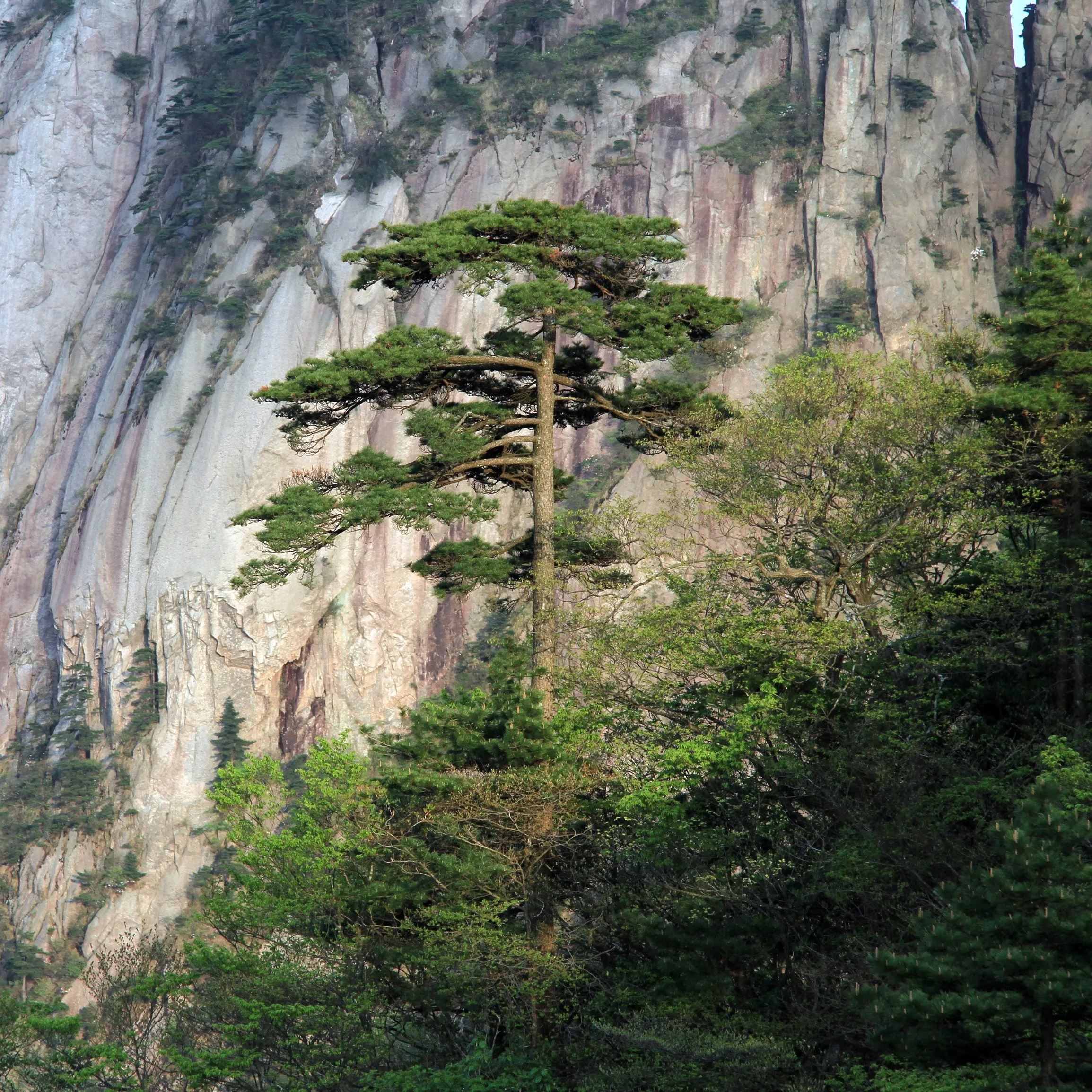Table Mountain Pine (Pinus Pungens) is a small evergreen pine tree that is native to the Appalachian Mountains. It is small in stature, is occasionally used ornamentally, but is often difficult to find. The trunk can be somewhat crooked, typically a medium-sized tree with an irregular crown and a short trunk with a diameter of 1-1.5'.
Typically found growing on mountains either in small stands or singly on dry, rocky slopes at elevations of 1,500- 4,500 (500-1,350 m). The tree usually begins producing cones as early as 5 years of age.
Table Mountains are traditionally low maintenance, pruning is not necessary, except for dead-branching. Table Mountains are resistant to most pests and diseases, however, it can sometimes be affected by pine beetles or diseases like root rot if planted in poorly drained soils.
Plant in full sun, tolerant to most soils, requires well draining landscapes and slopes.
Uses: Specimen or mass plantings, Naturalized Areas, Woodland Garden, Ponds and streams, Shade Tree, and Screening.
Growth Rate: Table Mountain Pines have a slow to moderate growth rate. They are long-lived trees, with some individuals reaching ages of 200-300 years.
Height: 30-60'
Width: 10-20'
Spacing: 15-25'
Zones: 5-7




